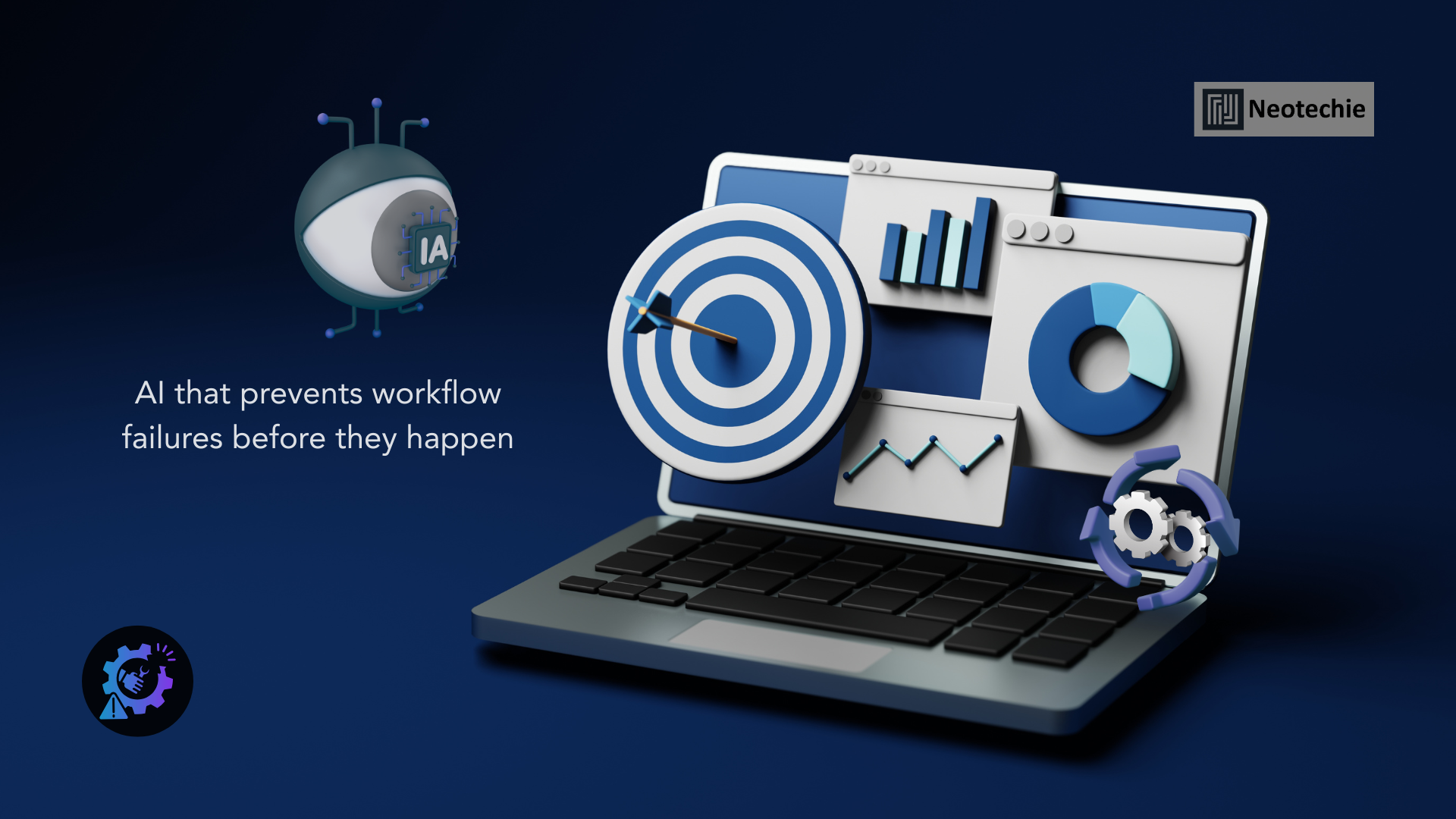Predictive analytics-powered process recovery – AI for Preempting Workflow Failures
What is Predictive Analytics-Powered Process Recovery?
Predictive analytics-powered process recovery leverages AI and machine learning to anticipate workflow failures before they occur, enabling preemptive action to maintain operational continuity. By analyzing historical data, real-time system logs, and resource utilization patterns, AI identifies potential failure points in business processes. These could include system outages, data inconsistencies, resource constraints, or bottlenecks caused by unexpected demand spikes.
Unlike reactive approaches, predictive recovery proactively mitigates risks, reroutes tasks, triggers alerts, or initiates backup workflows. This ensures business operations continue uninterrupted and reduces downtime, errors, and operational inefficiencies.
Why Predictive Process Recovery is Transformative
Predictive process recovery fundamentally changes how organizations approach workflow resilience:
- Anticipating Failures Before They Happen:
AI models analyze trends, patterns, and anomalies across processes to forecast potential failures. For example, predictive analytics can identify a server approaching capacity, a workflow prone to errors due to incomplete data, or a critical employee absence likely to cause delays. Early detection allows businesses to address risks proactively. - Minimizing Operational Downtime:
By triggering preemptive measures such as rerouting tasks, activating backup systems, or allocating additional resources, predictive recovery ensures that disruptions do not cascade into major operational failures. This is crucial in high-stakes environments like finance, healthcare, or logistics, where downtime can result in substantial financial and reputational losses. - Enhancing Decision-Making and Responsiveness:
Predictive insights provide management with actionable intelligence, enabling informed decision-making. For instance, operations teams can adjust resource allocation, prioritize tasks, or modify schedules in real-time based on AI forecasts, improving responsiveness and agility. - Reducing Manual Oversight and Error Propagation:
Traditional manual monitoring is often reactive and error-prone. Predictive AI continuously monitors workflows, detects deviations, and implements corrective actions automatically, reducing human intervention and the risk of human error. - Improving Customer and Stakeholder Confidence:
Maintaining uninterrupted operations, even during potential disruptions, ensures service reliability. Predictive process recovery helps organizations meet SLAs, uphold commitments, and strengthen trust with customers, partners, and regulators.
How Businesses Implement Predictive Process Recovery
- Data Collection and Analysis:
Gather historical process data, system logs, operational metrics, and performance indicators. AI models analyze this data to identify patterns that precede failures or inefficiencies. - Predictive Modeling:
Deploy machine learning models capable of detecting anomalies, forecasting resource bottlenecks, and predicting workflow disruptions. Models can learn continuously from new data, improving accuracy over time. - Workflow Design and Contingency Planning:
Implement automated recovery mechanisms within workflows. Examples include rerouting tasks, triggering alerts for human intervention, or activating backup systems. These measures ensure continuity even when predictive analytics detect potential failures. - Integration with Enterprise Systems:
Connect predictive analytics engines with task management platforms, ERP, CRM, and monitoring tools. Seamless integration allows AI to influence operational decisions in real-time, ensuring rapid response to identified risks. - Continuous Monitoring and Feedback Loops:
Monitor model performance, track the effectiveness of recovery actions, and incorporate feedback into AI models. Continuous refinement ensures that predictive capabilities evolve alongside changing business processes and environments.
How Neotechie Helps
Neotechie provides specialized solutions for predictive process recovery using AI:
- Comprehensive Process Assessment: Analyze workflows, system dependencies, and historical performance to identify potential failure points.
- Custom Predictive Analytics Models: Develop and deploy AI models tailored to organizational data and operational needs for accurate failure forecasting.
- Automated Recovery Mechanisms: Design preemptive measures, including task rerouting, alerts, and backup workflows to maintain continuity.
- Seamless Enterprise Integration: Ensure predictive systems integrate with task management, ERP, CRM, and monitoring platforms for real-time operational impact.
- Continuous Optimization and Monitoring: Track effectiveness, refine models, and enhance workflow recovery strategies over time.
Driving Business Transformation with Predictive Process Recovery
Predictive analytics-powered process recovery shifts businesses from reactive to proactive operational management. Organizations can anticipate disruptions, take preemptive measures, and maintain seamless operations, even in complex, high-volume environments. Employees and managers can focus on strategic initiatives instead of firefighting operational issues, improving overall productivity and engagement.
Neotechie ensures that predictive process recovery is not only technically robust but strategically aligned with organizational objectives. By leveraging AI to preempt workflow failures, enterprises enhance resilience, operational continuity, and customer trust, creating a competitive advantage and enabling sustainable business transformation.

